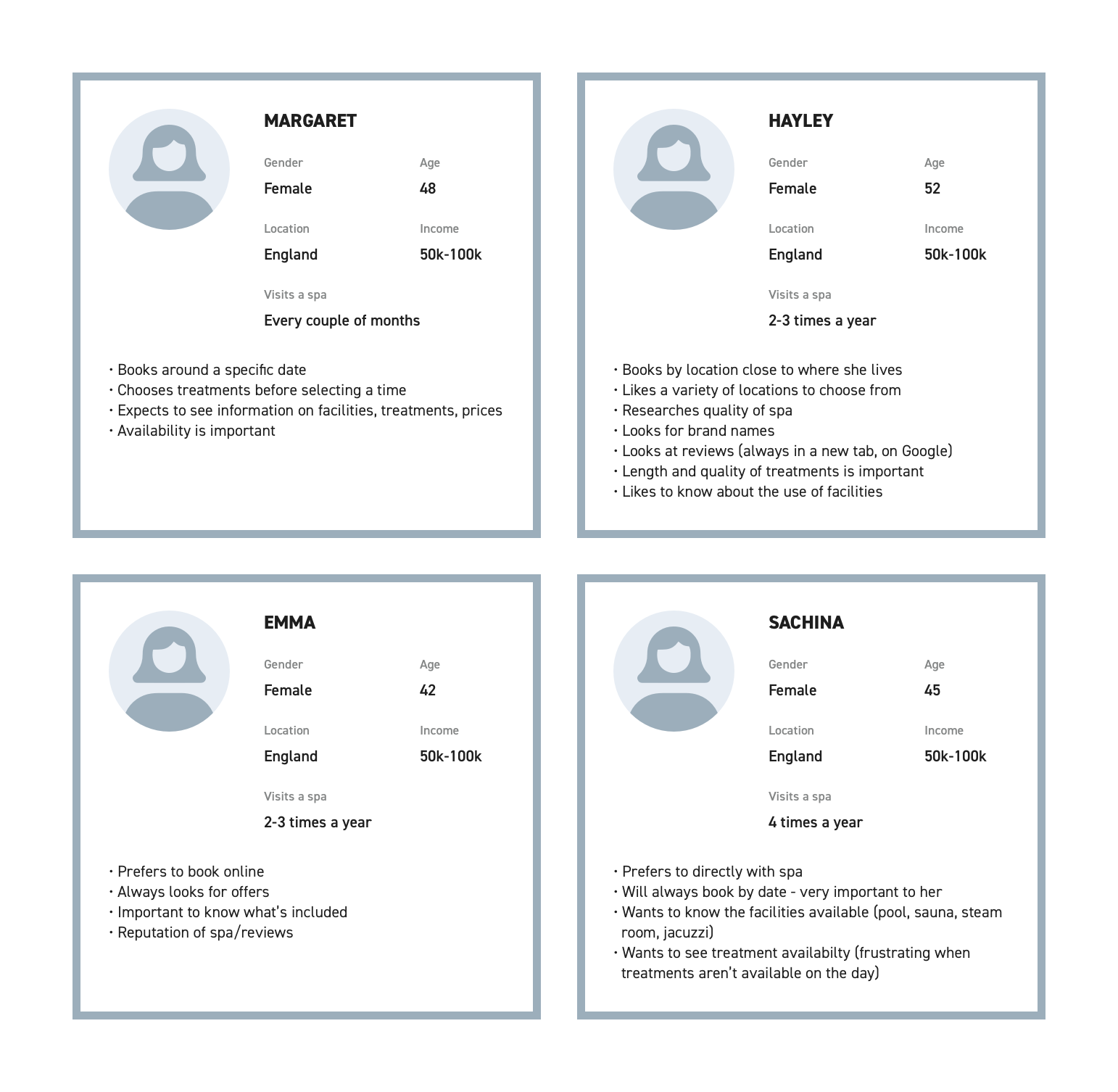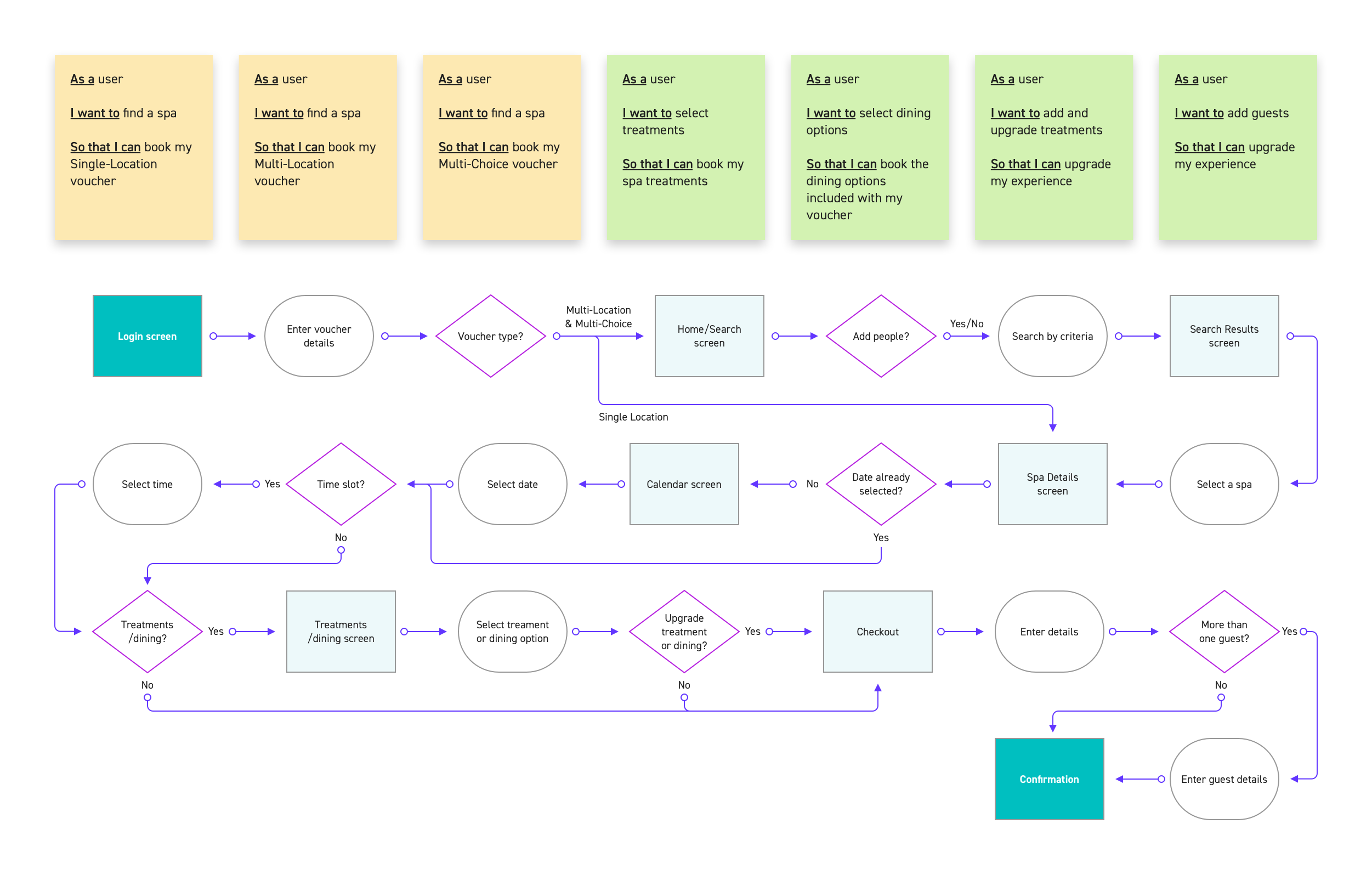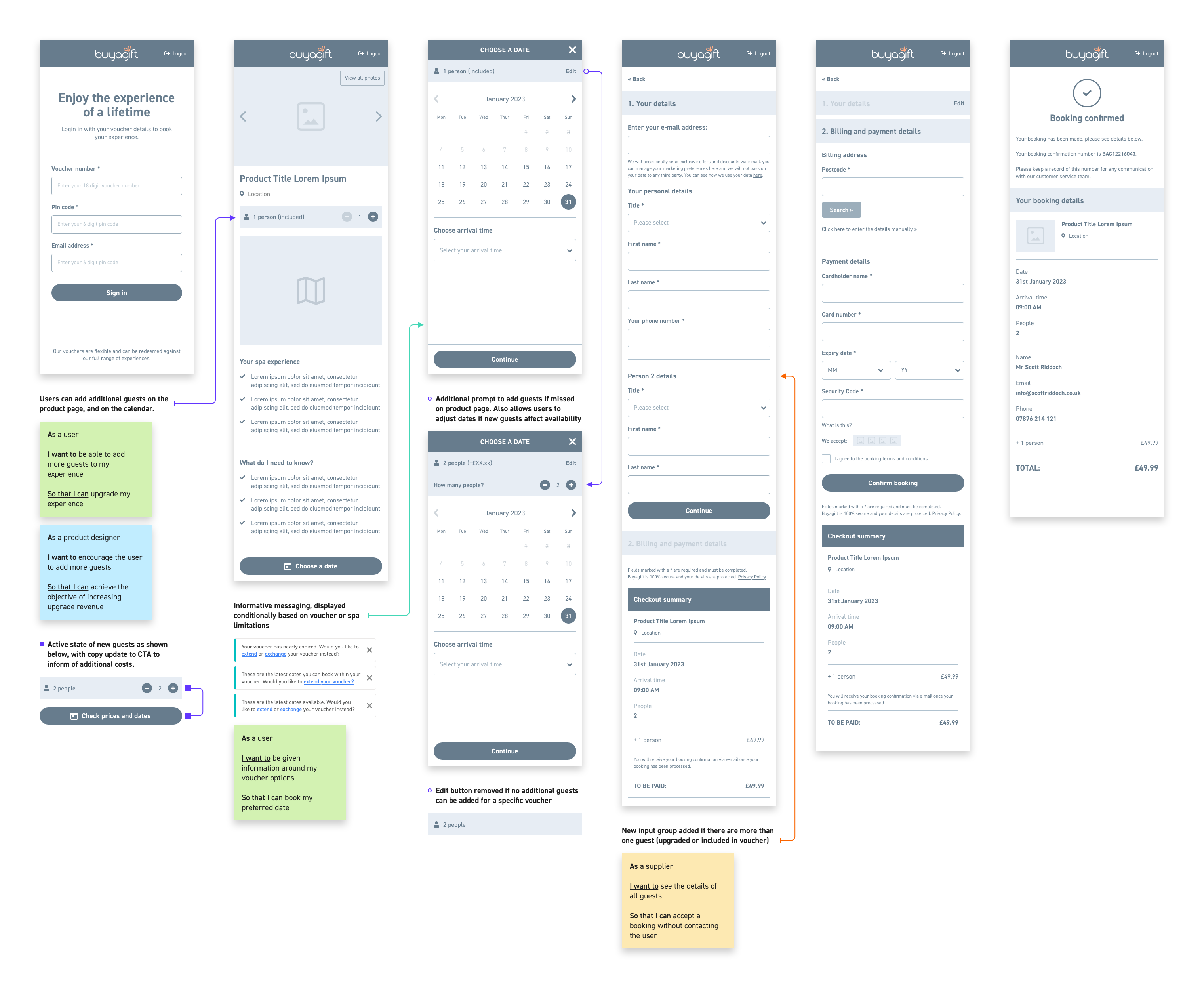Overview
Role: Product Designer
Team: Product Manager, Product Owner, Product Designer, FE Developer, BE Developer, Product Analyst
Problem
Users redeeming a Spa & Beauty experience are being directed to third parties to complete their booking. This leads to poor availability with locations, treatments and dining options, customer service issues, low beneficiary to purchaser conversion and missed opportunities with upsells.
Solution
Create an online platform that gives us full control over the booking journey. This tool should allow users to compare products, have a transparent overview of availability, book treatments and dining, offer upgrade, and upsell options, and provide superior customer services.
Deliverables
User research and reporting, journey mapping, wireframing, visual design and documentation, follow-up testing.
Key metrics
Booking conversions, NPS score, incremental revenue from upgrades, commissions revenue.

Research
We set up 4 unmoderated interviews to better understand our target users. We wanted to find out:
- How do users usually make a booking
- What information do users expect/want to see
- What information is important to a user's decision making
Summary
- Date and location are the most common way to look for a spa
- Users will invest a lot of time into researching the spa facilities and treatments
- Reputation of spa and brand names will also play a role in decision making
- Users want transparency of what's included
- Lack of availability for treatments is an existing pain point

Mapping the journey
By creating task flows we set out to cover the following scenarios:
- The user can book a Single-Location voucher - a specific spa at one location
- The user can book a Multi-Location voucher - a specific spa brand with multiple locations
- The user can book a Multi-Choice voucher - a variety of spa brands and locations
- The user can select and book treatments
- The user can select and book dining
- The user can add and upgrade treatments
- The user can add guests
Additionally, our journey had to be coherent with the previously completed Hotel booking system.
Wireframes
For testing, and launch, we only needed to cover the following scenarios:
- The user can book a Single-Location voucher - a specific spa at one location
- The user can add guests
Launching with these limited options allowed us to gather real user data while various issues were resolved with third party booking management services.
I began to create wireframes, working with stories and the task flows to solve problems - the example below shows a small sample of problems we solved. I also had to keep in mind that this journey will be expanded post-launch for other voucher types and had to be coherent with the Hotel booking system.
Prototype testing
Key findings:
- Users would select a time and then click continue having not selected a date
- Most time was spent reading through the product details, with users noting that this is a common and important part of their usual spa booking experience
Actionable steps for design:
- Push the user toward selecting a date by not having today’s date selected by default and only displaying time options once a date is selected
- Place the products details above the location map to give it more prominence
- Include parking info, cancellation policy, reviews (for phase-2 - dependent on third party booking management services)
Visual identity
We had the Buyagift hotel booking system as starting point to apply a visual identity to our designs. We also needed to ensure that we were adhering to the new design system and logging any new rules and assets.




Outcome and learnings
We launched with a limited set of products and features than we had initially planned for, meaning we were unable to reach the full potential of our objectives. This was out of the control of our team, though, and being able to collect data from real users while issues were resolved with third parties was seen as a positive short-term solution. Stakeholders were very happy with the results, and we were given the go-ahead to build another booking platform for the Attractions & Tours category.
Working on this project I found that we probably should have used moderated and unmoderated testing for different scenarios. For example, unmoderated interviews in the early discovery phase left me wanting more information, I really wanted to dig deeper and get more of an understanding of why our participants gave certain answers. I would take this learning into my next project.


